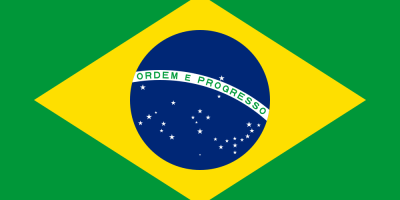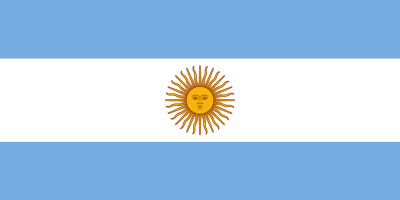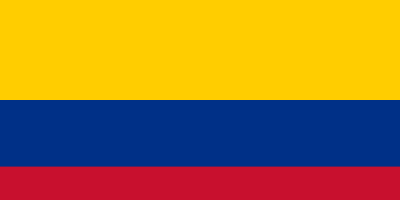Chile flag color codes features bold stripes of blue, white and red that beautifully encapsulate the country’s national identity. Understanding the meanings and specifications of the Chile flag provides deeper insight into this visual emblem. In this article, we list the exact Chile flag color codes across HTML HEX, RGB, PANTONE, HSL, CMYK, HWB and NCOL formats. Learn about the symbolic history of the colors and how to leverage these codes for digital design and printing projects related to Chile. The tri-colored banner with the lone star represents Chilean independence, national pride and the stunning nature of the country itself through its thoughtfully chosen palette. Read on to appreciate both the aesthetic beauty and symbolic significance contained within the vibrant Chile flag.
Table of Contents
What are the colors of Chile flag?
The colors of the Chile flag are:
- Blue – The rich, deep blue takes up the top and bottom thirds of the flag. It represents the sky, the Pacific Ocean, and the country’s lakes. The specific blue shade is Pantone 286.
- White – The broad central white band takes up the middle third of the flag and symbolizes the snow-capped Andes Mountains. It also represents peace and honesty.
- Red – The vibrant red is in a smaller square towards the flag’s hoist. It represents the blood shed by fighters for independence. The Pantone shade is 186.
- Gold – There is a golden yellow star within the red square that stands for unity, freedom and sovereignty.
So in summary, the four colors are:
- Deep blue
- Bright white
- Vibrant red
- Golden yellow
The meaningful colors and symbols encapsulate Chile’s natural beauty and national history.
Chile flag color codes & Color Names:
WHITE
| Color Model | Value |
|---|---|
| HTML | #FFFFFF |
| HEX | FFFFFF |
| RGB | 255, 255, 255 |
| PANTONE | Safe |
| HSL | 0°, 0%, 100% |
| CMYK | 0%, 0%, 0%, 0% |
| HWB | 0°, 100%, 0% |
| NCOL | #FFFFFF |
BLUE
| Color Model | Value |
|---|---|
| HTML | #0033A0 |
| HEX | 0033A0 |
| RGB | 0, 51, 160 |
| PANTONE | 286 |
| HSL | 220°, 100%, 31% |
| CMYK | 100%, 93%, 0%, 0% |
| HWB | 220°, 0%, 37% |
| NCOL | #0000FF |
RED
| Color Model | Value |
|---|---|
| HTML | #EF3340 |
| HEX | EF3340 |
| RGB | 239, 51, 64 |
| PANTONE | 186 |
| HSL | 355°, 86%, 56% |
| CMYK | 0%, 79%, 73%, 6% |
| HWB | 355°, 6%, 6% |
| NCOL | #FF0000 |
What is the meaning of colors in the Chile flag?
Here are the symbolic meanings behind the colors of the Chile flag:
Blue – The deep blue represents the clear skies and the Pacific Ocean along Chile’s coast. It also symbolizes justice, perseverance, and strength.
White – The white band epitomizes the snowy Andes Mountains as well as peace and honesty.
Red – The red color signifies the bloodshed by Chile’s independence fighters. It honors their sacrifice for the nation.
Gold – The golden star stands for the mineral wealth of the country. It also symbolizes unity, freedom and sovereignty.
In summary:
- Blue represents the skies, ocean, justice and strength.
- White symbolizes the mountains, peace and honesty.
- Red honors the blood sacrificed for independence.
- Gold signifies unity, freedom, sovereignty and mineral wealth.
The bold triband design and lone star create a distinctive and meaningful flag that encapsulates Chile’s natural splendor and national principles. The colors bring the heart of the nation visually to life.
Explore More Flag Colors:
FAQs: Frequently Asked Questions:
Is Chile in Asia Or Europe?
Chile is located in South America. It is a long, narrow country that stretches along the western edge of the continent, with the Pacific Ocean to its west. Chile does not belong to Asia or Europe; it is situated in the southern part of the Americas. The capital of Chile is Santiago.
Why is Chile famous?
Here are some aspects for which Chile is well-known:
Geographical Diversity:
Chile is renowned for its diverse and breathtaking landscapes. The country boasts the Andes Mountains, the Atacama Desert (one of the driest deserts in the world), pristine lakes, glaciers, and a long coastline along the Pacific Ocean.
Wine Production:
Chile is a major player in the global wine industry. The country is known for producing high-quality wines, particularly red wines like Cabernet Sauvignon and Merlot. The Central Valley and Maipo Valley are prominent wine regions.
Easter Island:
Chile is home to Easter Island (Rapa Nui), a remote island in the Pacific Ocean known for its mysterious giant stone statues called moai. Easter Island is a UNESCO World Heritage site.
Torres del Paine National Park:
Torres del Paine, located in the Patagonian region, is a famous national park celebrated for its rugged mountains, glaciers, and picturesque landscapes. It is a popular destination for trekking and outdoor enthusiasts.
Copper Production:
Chile is a leading global producer of copper, and its economy has been historically influenced by copper mining. The country has some of the world’s largest copper reserves.
Pablo Neruda:
The Nobel Prize-winning poet Pablo Neruda was from Chile. His works are celebrated globally, and his former homes in Santiago, Valparaíso, and Isla Negra are now museums.
Salvador Allende and Pinochet Era:
Chile’s political history gained international attention during the presidency of Salvador Allende and the subsequent military coup in 1973, leading to the authoritarian rule of Augusto Pinochet.
What kind of country is Chile?
Chile is a country located in South America, and it is characterized by several key features:
Democratic Republic:
Chile is a democratic republic with a presidential system of government. The President of Chile is both the head of state and the head of government.
Geographical Diversity:
Chile is known for its diverse geography, including the Andes Mountains, the Atacama Desert, lakes, rivers, and a long Pacific Ocean coastline. The country’s geographical features contribute to its unique climate zones.
Economic Stability:
Chile has one of the more stable and prosperous economies in South America. It has a market-oriented economy, and sectors such as mining (especially copper), agriculture, and services play significant roles.
Cultural Richness:
Chile has a rich cultural heritage influenced by indigenous peoples, Spanish colonial history, and various immigrant groups. The country celebrates traditional festivals, has a vibrant arts scene, and is known for notable literary figures like Pablo Neruda.
Political History:
Chile has a complex political history, marked by periods of democratic governance and episodes of political instability. The country went through a military coup in 1973, leading to the authoritarian rule of Augusto Pinochet until 1990.
Social Development:
Chile has made progress in social development indicators, including education and healthcare. The country has worked to address social inequality and improve living standards.
Natural Resources:
Chile is a significant global producer of copper, and its economy is closely tied to the mining industry. The country also has other natural resources, including agricultural products and renewable energy potential.
International Relations:
Chile is actively engaged in international relations and has been a member of various international organizations. The country has a history of diplomatic initiatives and has pursued free trade agreements with multiple nations.
Is Chile cheap or expensive?
Here are some factors that may influence the perception of Chile as either cheap or expensive:
Cities vs. Rural Areas:
Major cities, such as Santiago, may have a higher cost of living compared to rural areas. Accommodation, dining, and entertainment expenses in urban centers may contribute to a higher overall cost.
Dining Out:
The cost of dining out can vary, but eating at restaurants may be more expensive than preparing meals at home. However, street food and local markets can offer more budget-friendly options.
Accommodation:
Accommodation costs can vary based on the type of lodging and location. Hostels and budget hotels may be more affordable, while luxury hotels can be relatively expensive.
Transportation:
Public transportation in Chile is generally reasonably priced, but private transportation and certain long-distance travel options may contribute to expenses.
Consumer Goods:
The cost of consumer goods, including groceries and everyday items, can be influenced by factors such as brand preferences and shopping locations.
Tourist Areas:
Tourist destinations, such as Patagonia and Easter Island, may have higher prices due to the influx of visitors and the remoteness of some locations.
Is Chile a English speaking country?
No, Chile is not an English-speaking country. The official language of Chile is Spanish. Spanish is the primary language used in government, education, and everyday communication. While some Chileans may speak English, especially in urban areas and within certain industries like tourism, the predominant language is Spanish.
Is Chile a stable country?
Chile is generally considered a politically stable country with a well-established democratic system. The country has a history of democratic governance, and political transitions have occurred peacefully through elections.
Is Chili a rich country?
Chile is often considered to be one of the more economically developed and prosperous countries in South America. The country has a diverse economy, with key sectors such as mining (especially copper), agriculture, services, and tourism playing important roles.
Chile’s economic stability has been influenced by factors such as sound macroeconomic policies, export-oriented growth, and a commitment to open-market principles. The country has also been successful in attracting foreign investment.
Is Chile a beautiful country?
Chile’s reputation for beauty:
Andes Mountains:
Chile is home to a significant portion of the Andes Mountains, providing breathtaking mountain landscapes, high-altitude lakes, and opportunities for outdoor activities like trekking and mountaineering.
Patagonia:
The Patagonian region in southern Chile is celebrated for its pristine wilderness, glaciers, fjords, and unique wildlife. Torres del Paine National Park is a famous destination in Patagonia.
Atacama Desert:
The Atacama Desert in the north of Chile is known for its otherworldly landscapes, salt flats, and some of the clearest skies on Earth, making it a prime location for astronomical observations.
Pacific Coastline:
Chile has a long Pacific Ocean coastline, offering picturesque beaches, coastal cliffs, and seaside towns. Valparaíso, a colorful and historic port city, is renowned for its unique architecture.
What makes Chile a rich country?
Here are some key factors that contribute to Chile’s status as a relatively rich country:
Copper Production:
Chile is the world’s leading producer of copper, a valuable commodity used in various industries. The country’s significant copper exports contribute significantly to its economic wealth.
Economic Policies:
Chile has implemented sound economic policies, including market-oriented reforms and fiscal discipline. These policies have fostered a stable economic environment and attracted foreign investment.
Trade Agreements:
Chile has actively pursued international trade agreements, fostering economic relationships with countries worldwide. This has facilitated the export of goods and services, contributing to economic growth.
Diversified Economy:
While copper is a crucial part of the economy, Chile has diversified its economic activities. Sectors such as agriculture, forestry, fisheries, services, and tourism also play important roles.
Natural Resources:
In addition to copper, Chile has other valuable natural resources, including lithium, molybdenum, timber, and agricultural products. The exploitation and export of these resources contribute to the economy.
Political Stability:
Chile has a history of political stability and a commitment to democratic governance. Political stability is often seen as a positive factor for economic development and foreign investment.
Social Development:
Chile has made progress in social development indicators, including education and healthcare. Investments in human capital contribute to a more skilled and productive workforce.
Foreign Investment:
Chile has been successful in attracting foreign direct investment (FDI), which has played a role in the development of various sectors of the economy.
Tourism:
The tourism industry in Chile has grown, attracting visitors with its diverse landscapes, historical sites, and cultural attractions. Tourism contributes to economic growth and job creation.
Innovation and Technology:
Chile has invested in innovation and technology, fostering a more competitive economy. Initiatives to support entrepreneurship and research and development contribute to economic advancement.













